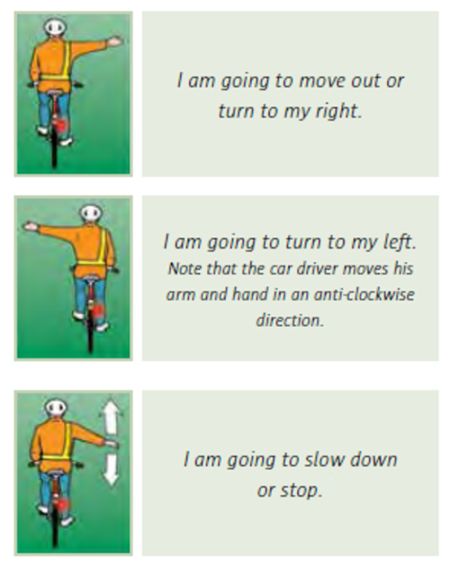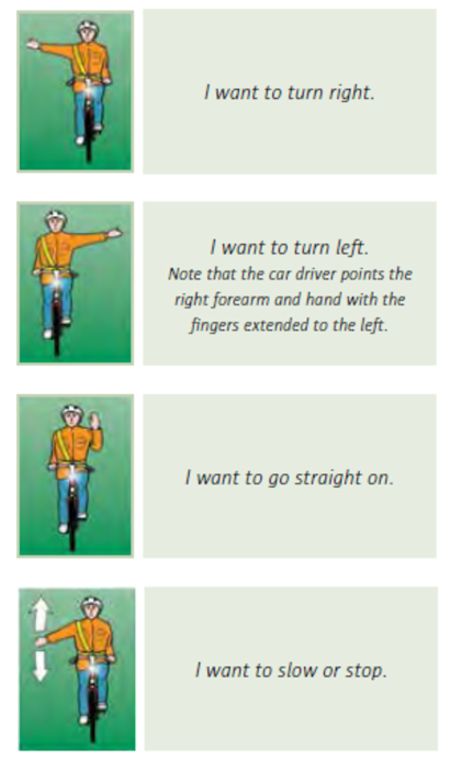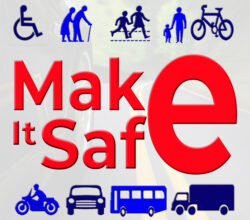Our top road safety tips to help you cycle safely on our roads.
Cycling is a great, healthy pastime and a great mode of transport for school, college or work. But as a cyclist, you are a very vulnerable road user. So, it’s vital that you practice good road safety and take personal responsibility for keeping yourself, pedestrians and other road users safe on our roads.
| pic of cyclist riding |
When cycling, always make sure you give other road users the best chance of seeing you. Wear high visibility clothing and keep your bicycle lights in good working order. You should also signal in plenty of time to allow others to react to your movements. Don’t ever ride or attempt to ride a bicycle while under the influence of alcohol or drugs.
Remember, cyclists put themselves and others at risk when they do not stop as required at traffic lights.
Safer cycling
Wear a helmet
 As a cyclist, you are a vulnerable road user and your bicycle will not protect you if you have a crash. The law requires you to wear a helmet. In the interest of road safety and your personal protection, you should wear one at all times while cycling. It is an essential, life-saving piece of cycling equipment.
As a cyclist, you are a vulnerable road user and your bicycle will not protect you if you have a crash. The law requires you to wear a helmet. In the interest of road safety and your personal protection, you should wear one at all times while cycling. It is an essential, life-saving piece of cycling equipment.
Using bicycle child seats and trailers
 When you carry children on bicycle trailers or child seats, you can often expose them to dangers on the road.
When you carry children on bicycle trailers or child seats, you can often expose them to dangers on the road.
If you intend to use a child seat for carrying a child on your bicycle, make sure that it is fit for purpose and securely fitted by a competent person. Make sure your child is wearing a suitable cycle helmet and check that the seat’s restraining straps are in good condition. Be aware of the risk of your child’s feet getting caught in the wheel spokes. The seat should have secure foot straps. Ensure clothing like scarfs and shoe laces cannot get caught in the wheels.
Bicycle trailers are generally low to the ground so HGV and car drivers may not be aware of them immediately behind the bike. Towing a trailer will also have an adverse effect on the handling of a bicycle. The way you corner may have to be adapted and stopping times may increase as a result of the increased weight of the trailer. In busy areas you will have to take account of the extra width, especially in cycle tracks where you might take up the full width of the lane.
Cycling offences
As a cyclist you are a road user. That means obeying all road laws. If you do not obey the rules, you can be charged with cycling offences. Here are some you should know about:
Description of offence
Cyclist driving a pedal cycle without reasonable consideration
No front lamp or rear lamp lit during lighting-up hours on a pedal cycle
Cyclist proceeding into a pedestrianised street or area
Cyclist proceeding past traffic lights when the red lamp is illuminated
Cyclist failing to stop for a school warden sign
Cyclist failing to wear appropriate head protection
Get to know these hand signals for cyclists
Signals are an indication of your intent; they do not give you right-of-way. The law requires you to signal properly before moving off, turning right or left, changing lanes, overtaking, slowing down or stopping. You must signal clearly and in good time.
Here are the signals you should use for traffic coming from behind:

HAZARD ON THE ROAD

MOVE OUT

SLOW DOWN

LEFT/RIGHT TURN

STOP

COME THROUGH

Here are the signals you should use for oncoming traffic:

Children cycling on the road
 Our research shows that children do not perfect the skills necessary to safely interact with traffic until they are over the age of 12 years. Before this age, their judgement skills and perception of speed and distance have not yet been fully developed. For these reasons, they need help to cycle safely on the road.
Our research shows that children do not perfect the skills necessary to safely interact with traffic until they are over the age of 12 years. Before this age, their judgement skills and perception of speed and distance have not yet been fully developed. For these reasons, they need help to cycle safely on the road.
Coming Soon! Our cycle training programme, offers a range of videos designed to help children master the basics of cycling safely.
Wear a helmet
 As a cyclist, you are a vulnerable road user and your bicycle will not protect you if you have a crash. The law requires you to wear a helmet. In the interest of road safety and your personal protection, you should wear one at all times while cycling. It is an essential, life-saving piece of cycling equipment.
As a cyclist, you are a vulnerable road user and your bicycle will not protect you if you have a crash. The law requires you to wear a helmet. In the interest of road safety and your personal protection, you should wear one at all times while cycling. It is an essential, life-saving piece of cycling equipment.
Using bicycle child seats and trailers
 When you carry children on bicycle trailers or child seats, you can often expose them to dangers on the road.
When you carry children on bicycle trailers or child seats, you can often expose them to dangers on the road.
If you intend to use a child seat for carrying a child on your bicycle, make sure that it is fit for purpose and securely fitted by a competent person. Make sure your child is wearing a suitable cycle helmet and check that the seat’s restraining straps are in good condition. Be aware of the risk of your child’s feet getting caught in the wheel spokes. The seat should have secure foot straps. Ensure clothing like scarfs and shoe laces cannot get caught in the wheels.
Bicycle trailers are generally low to the ground so HGV and car drivers may not be aware of them immediately behind the bike. Towing a trailer will also have an adverse effect on the handling of a bicycle. The way you corner may have to be adapted and stopping times may increase as a result of the increased weight of the trailer. In busy areas you will have to take account of the extra width, especially in cycle tracks where you might take up the full width of the lane.
Cycling offences
As a cyclist you are a road user. That means obeying all road laws. If you do not obey the rules, you can be charged with cycling offences. Here are some you should know about:
| Description of offence |
|---|
| Cyclist driving a pedal cycle without reasonable consideration |
| No front lamp or rear lamp lit during lighting-up hours on a pedal cycle |
| Cyclist proceeding into a pedestrianised street or area |
| Cyclist proceeding past traffic lights when the red lamp is illuminated |
| Cyclist failing to stop for a school warden sign |
| Cyclist failing to wear appropriate head protection |
Get to know these hand signals for cyclists
Signals are an indication of your intent; they do not give you right-of-way. The law requires you to signal properly before moving off, turning right or left, changing lanes, overtaking, slowing down or stopping. You must signal clearly and in good time.
Here are the signals you should use for traffic coming from behind:

HAZARD ON THE ROAD |
 |
MOVE OUT |
 |
SLOW DOWN |
 |
LEFT/RIGHT TURN |
 |
STOP |
 |
COME THROUGH |
 |
Here are the signals you should use for oncoming traffic:

Children cycling on the road
 Our research shows that children do not perfect the skills necessary to safely interact with traffic until they are over the age of 12 years. Before this age, their judgement skills and perception of speed and distance have not yet been fully developed. For these reasons, they need help to cycle safely on the road.
Our research shows that children do not perfect the skills necessary to safely interact with traffic until they are over the age of 12 years. Before this age, their judgement skills and perception of speed and distance have not yet been fully developed. For these reasons, they need help to cycle safely on the road.
Coming Soon! Our cycle training programme, offers a range of videos designed to help children master the basics of cycling safely.
Coming Soon! Our safe cycling series of videos will show you how to stay safe while cycling on our roads.
![]()
